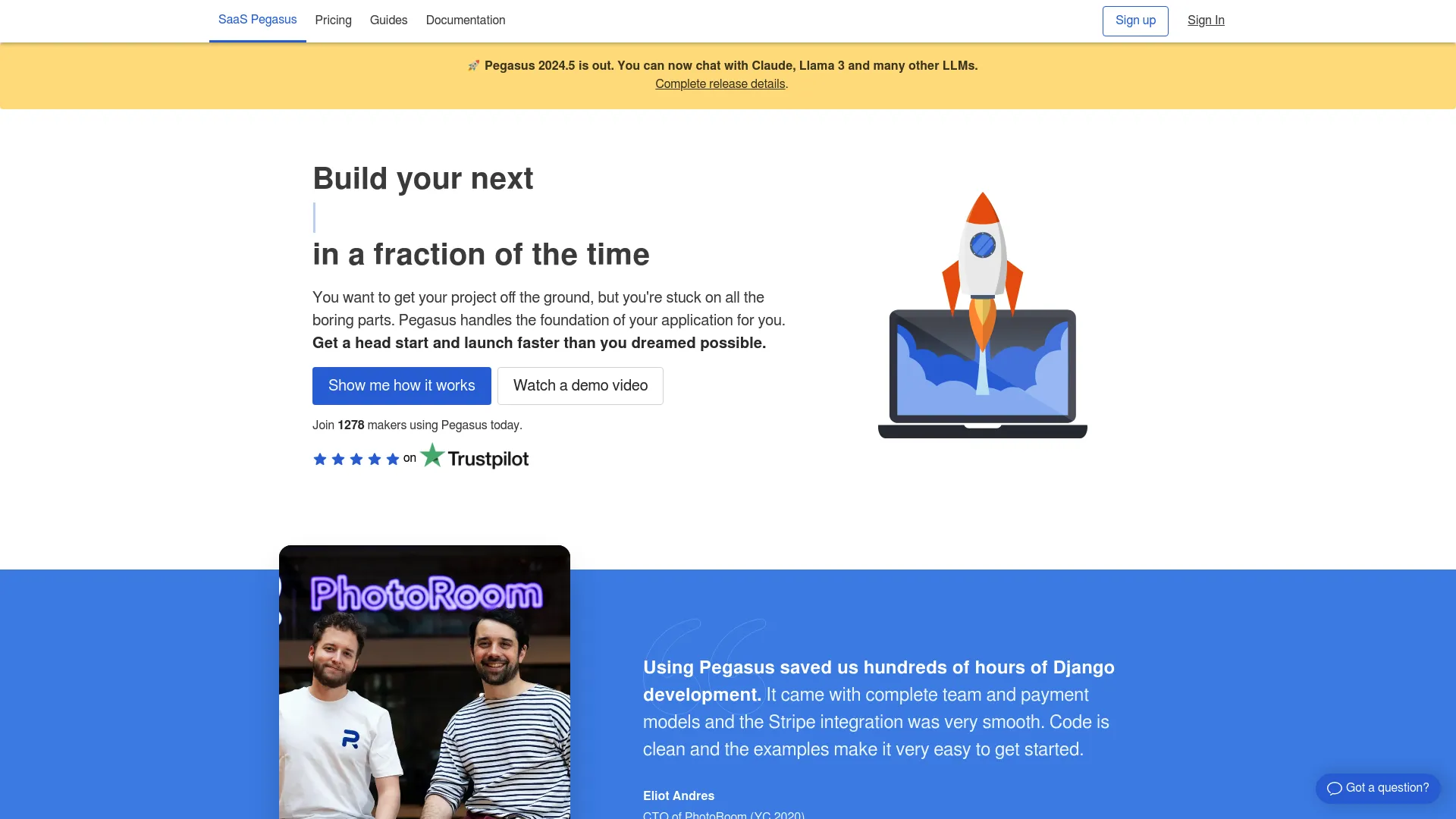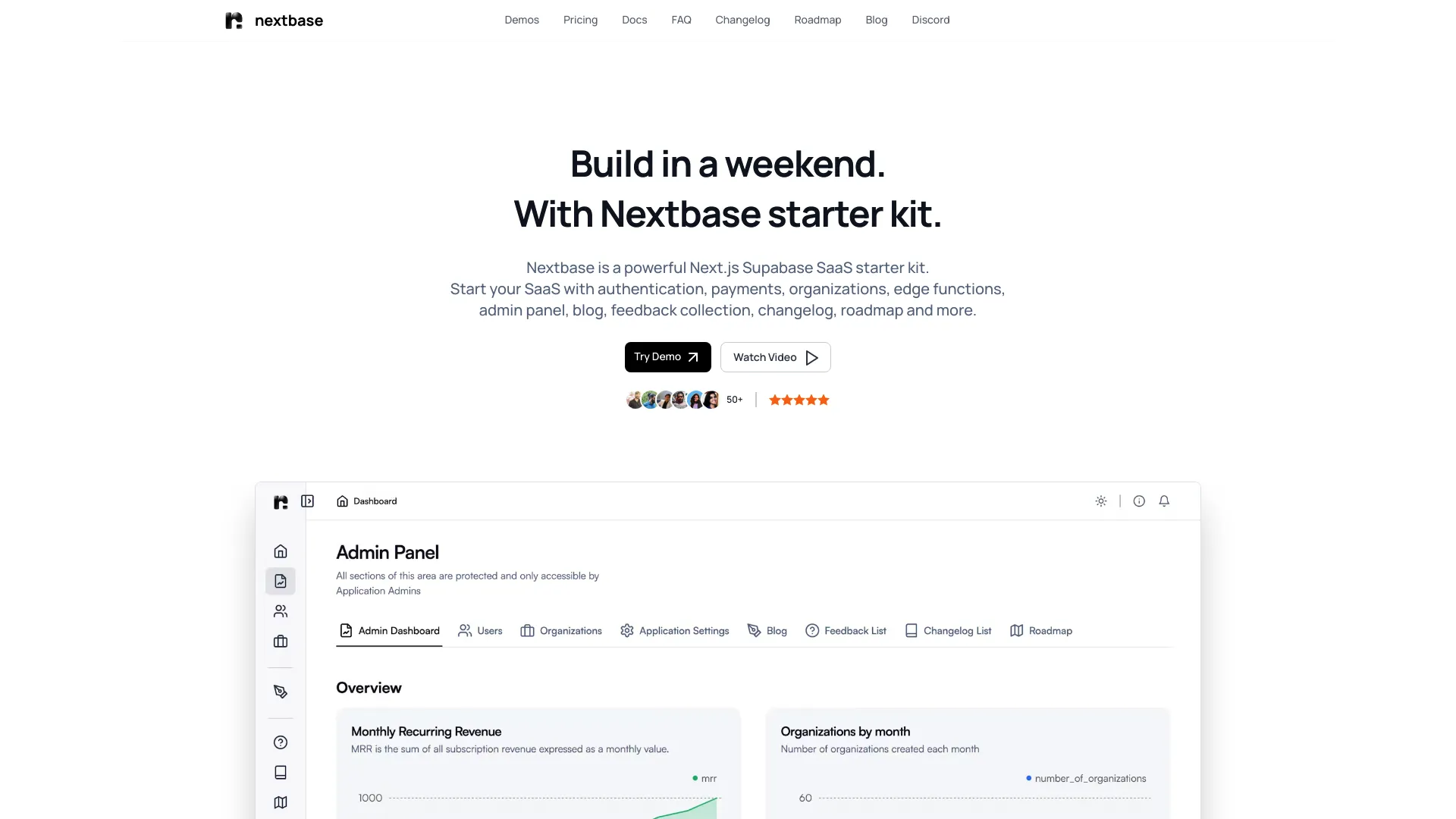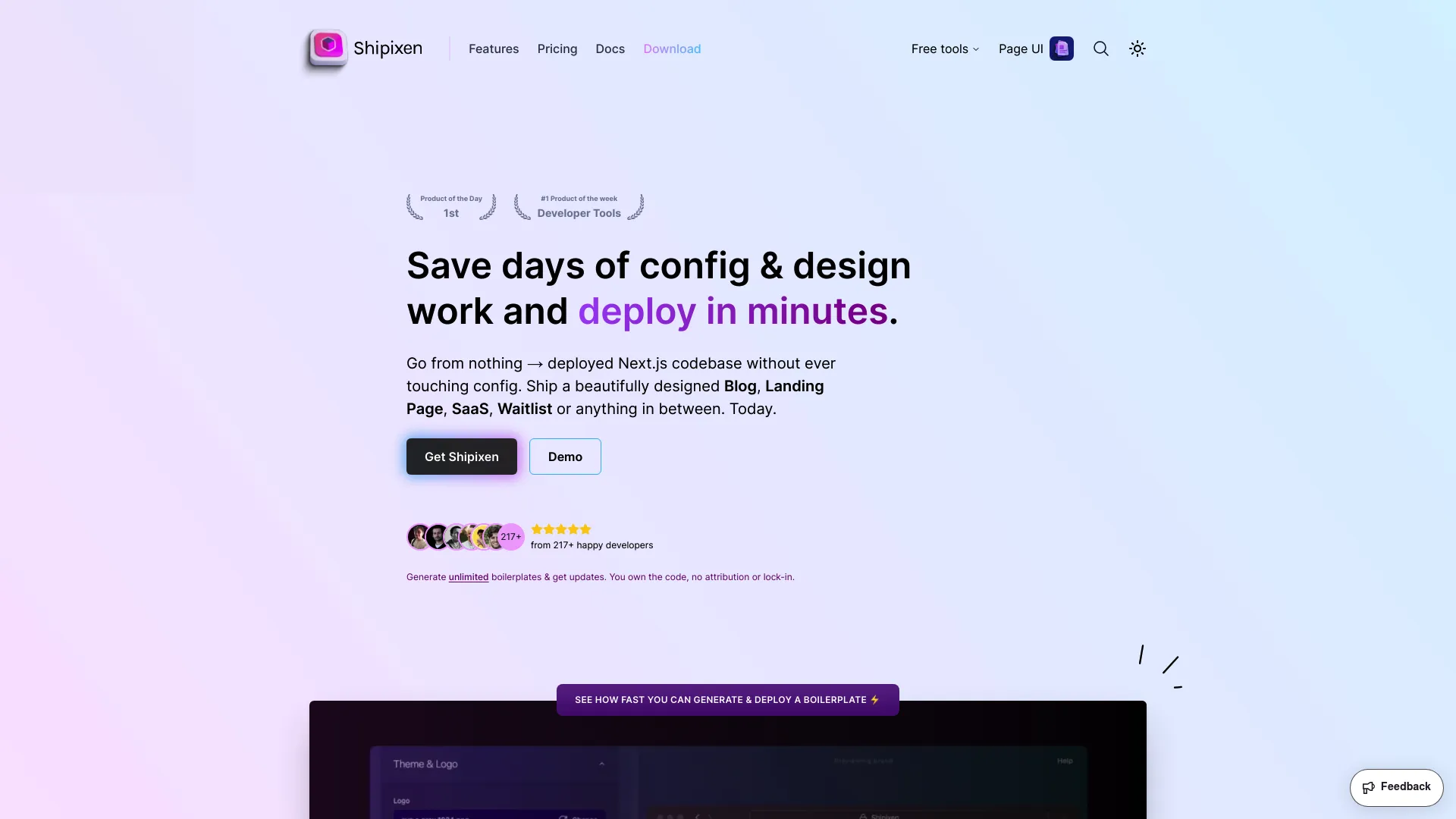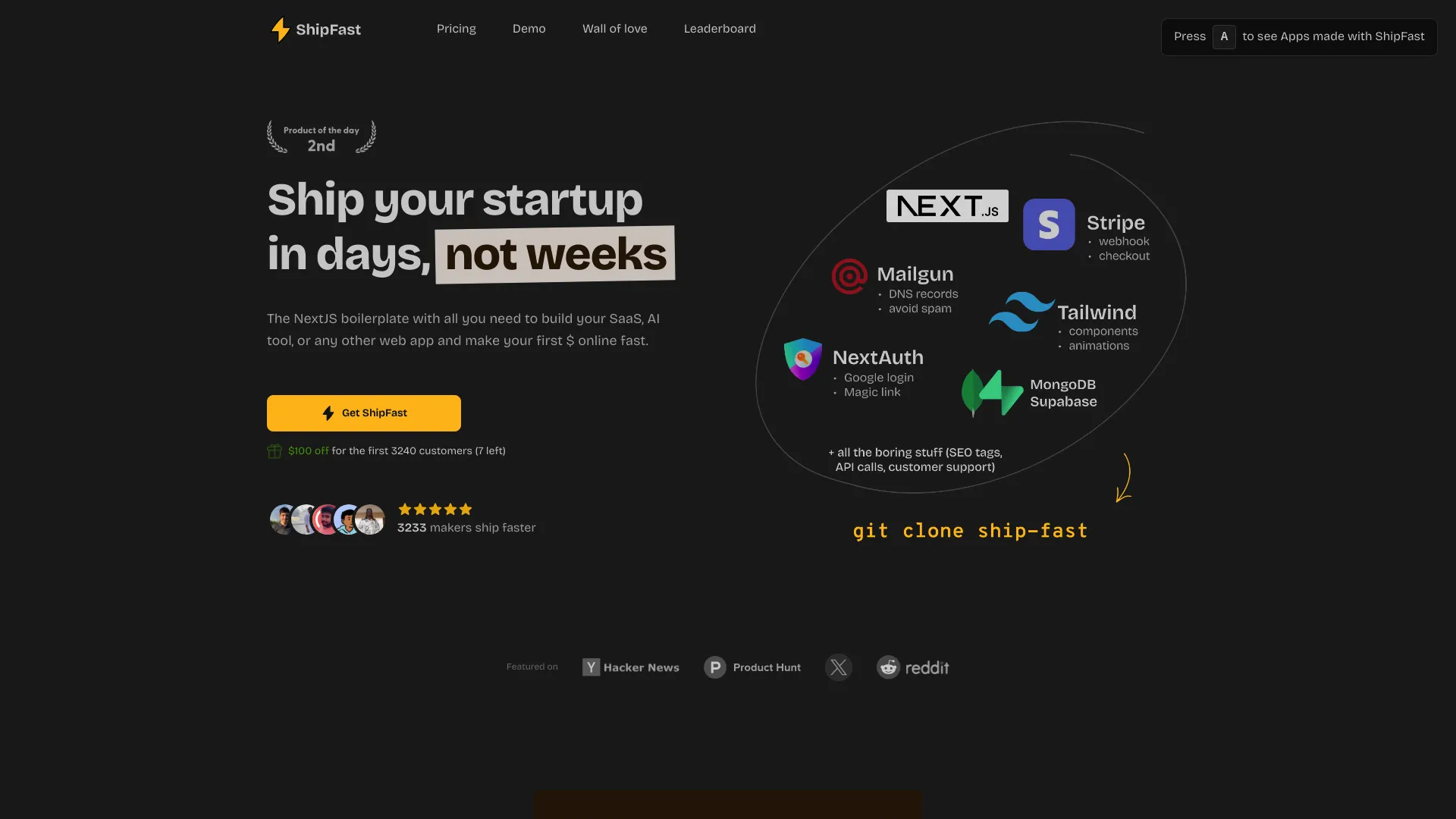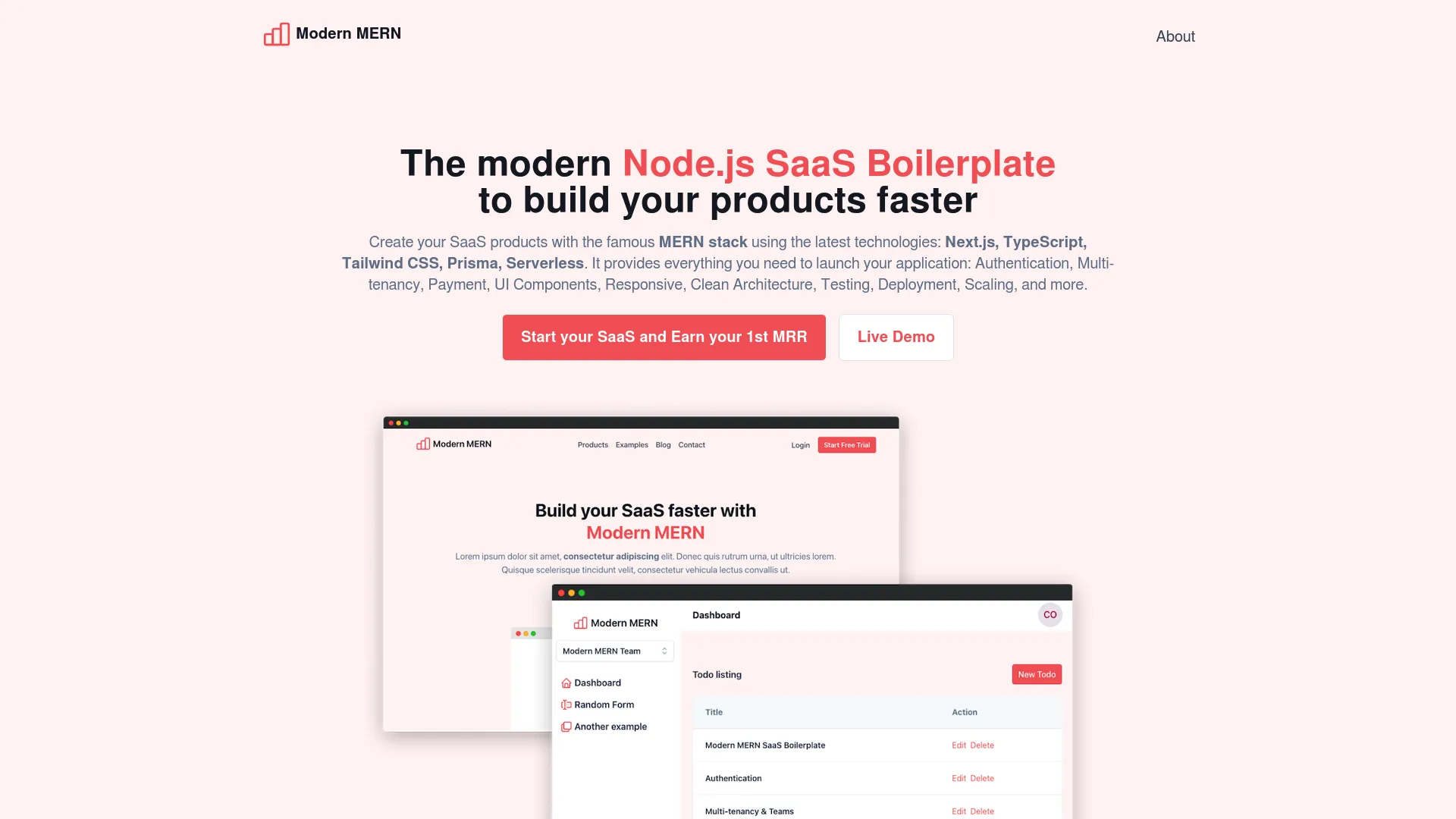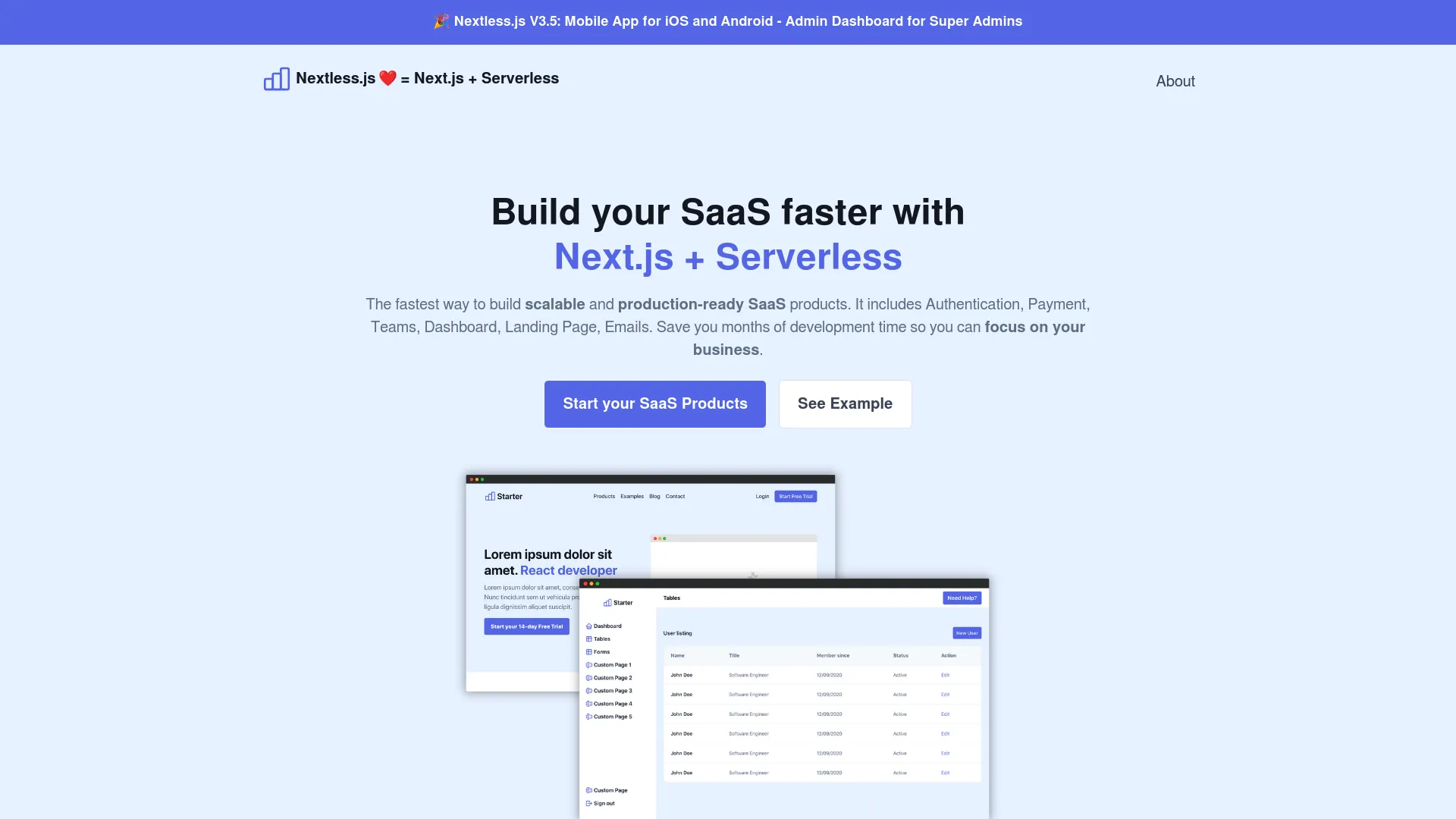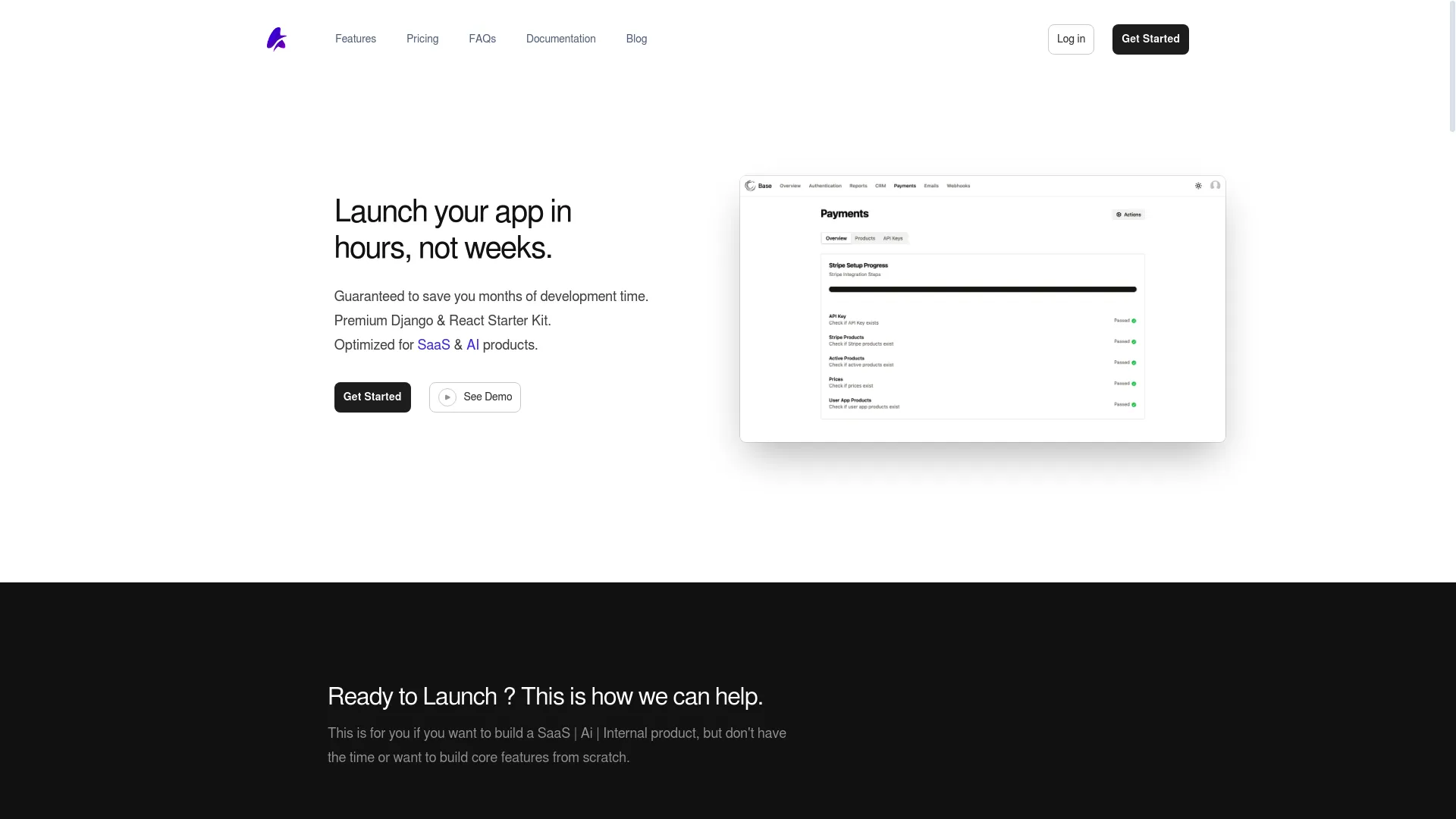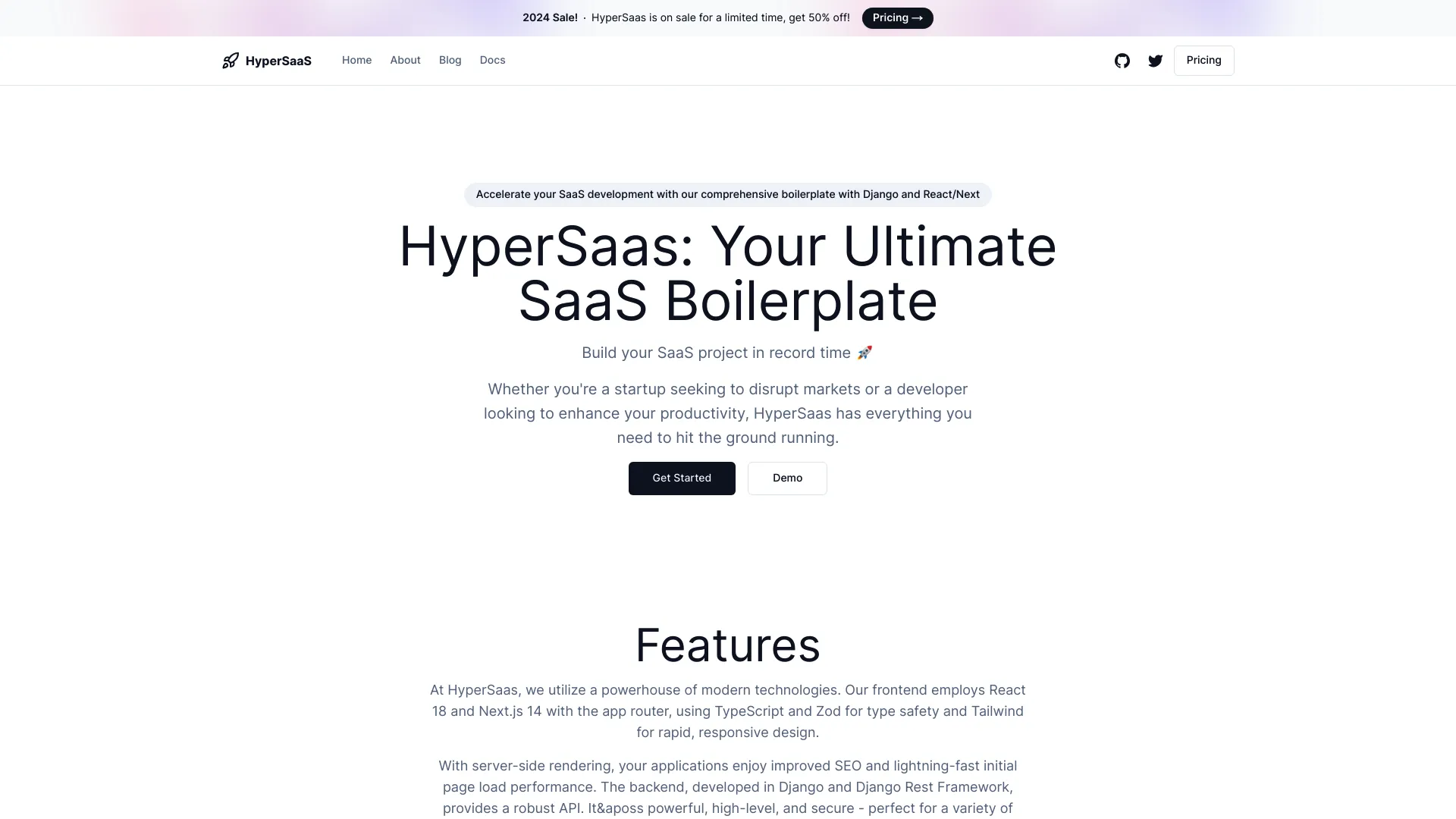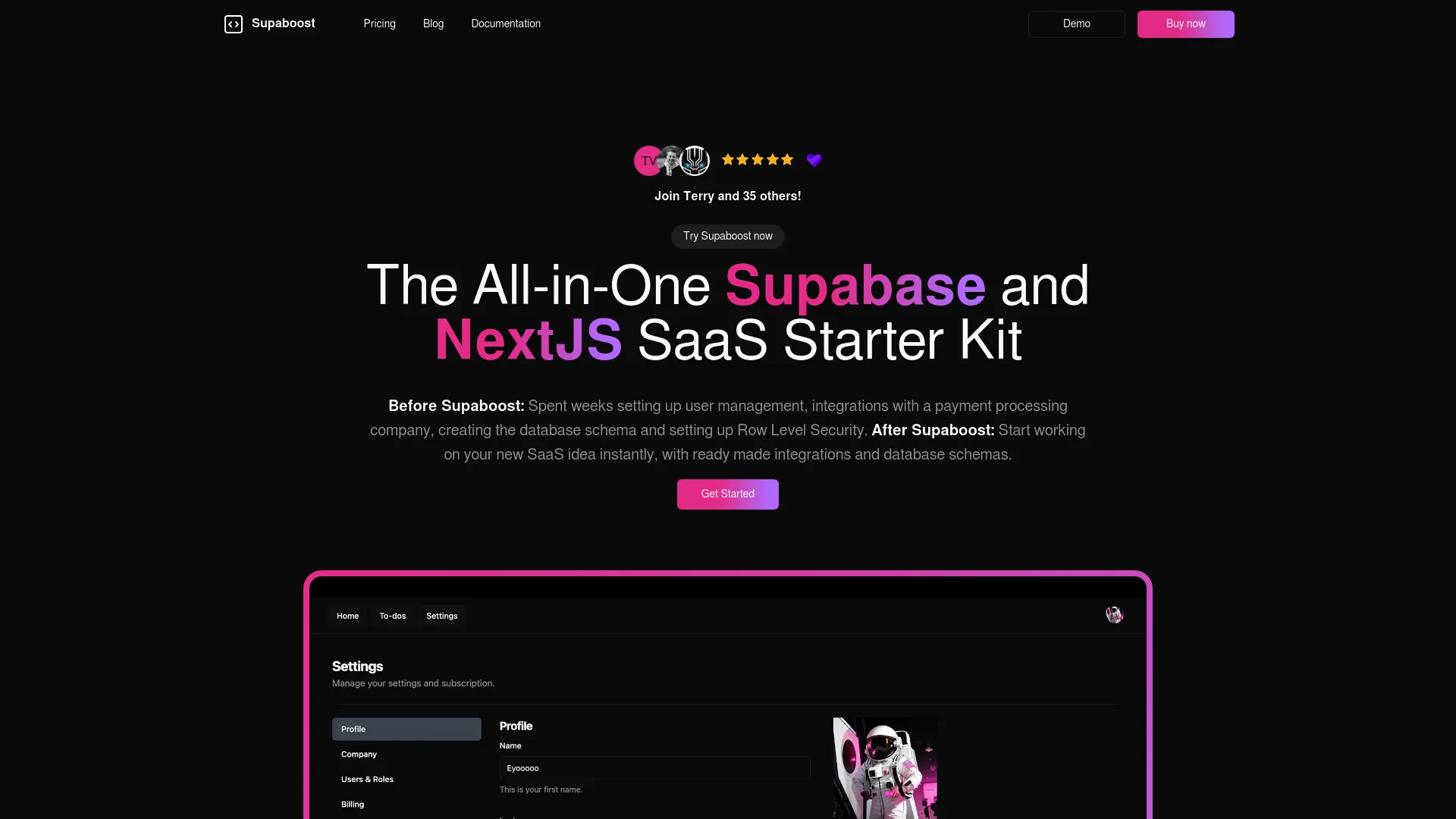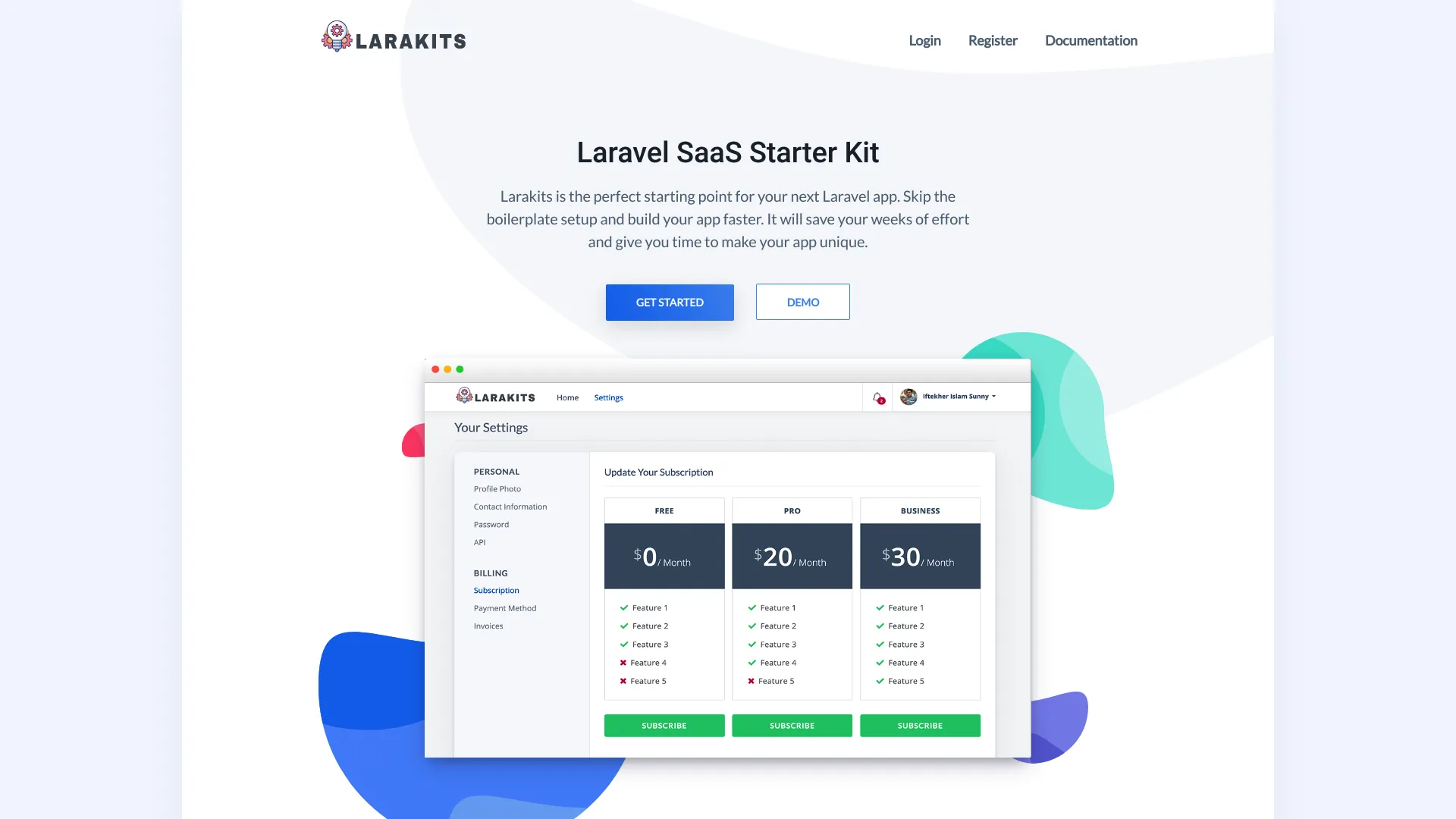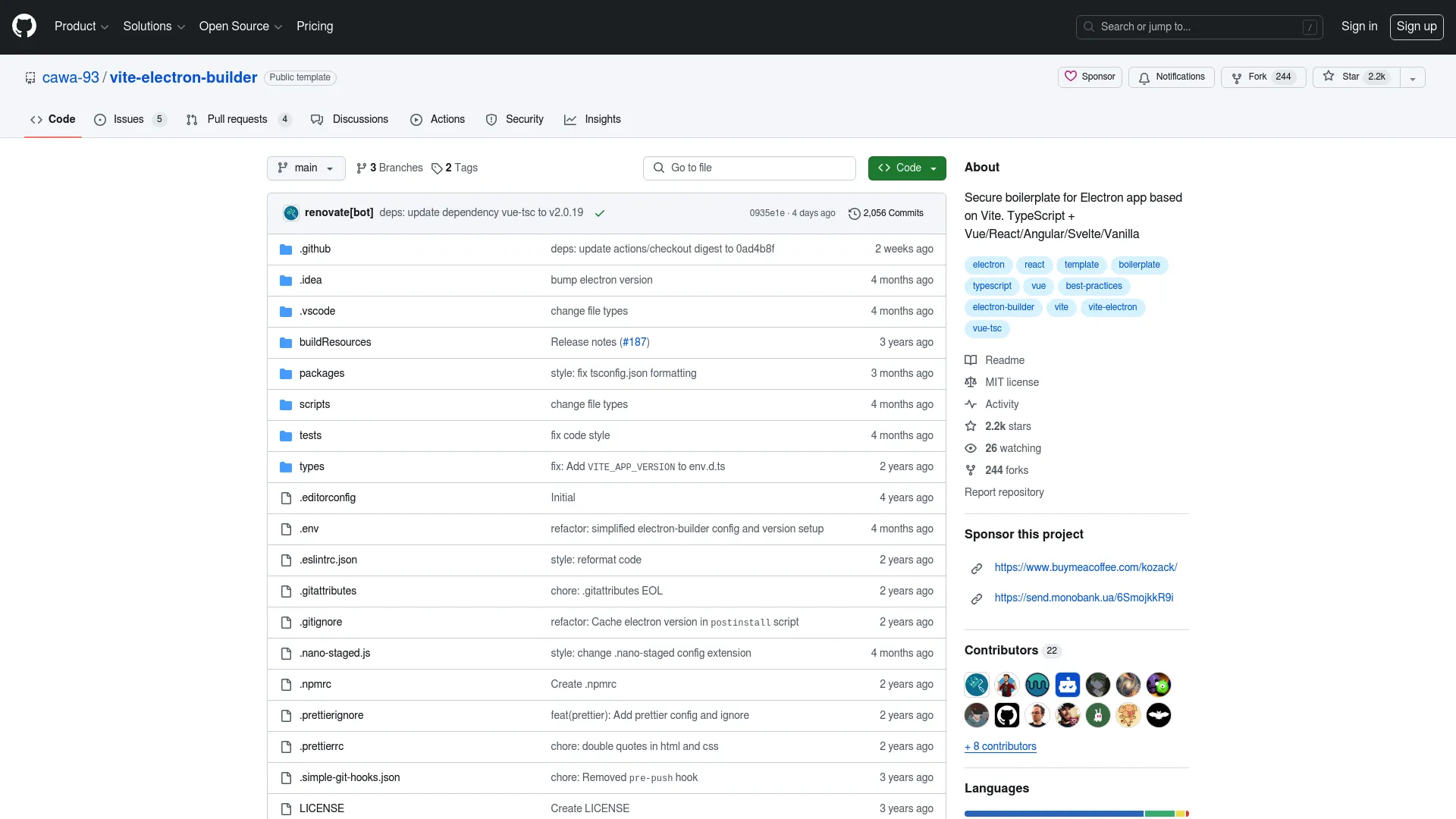React Boilerplates & Starter Kits
Discover top React boilerplates and starter kits to accelerate your web development. Learn about React, its benefits, common features of boilerplates, how it compares to alternatives, and ideal use cases.
Technologies
Reset








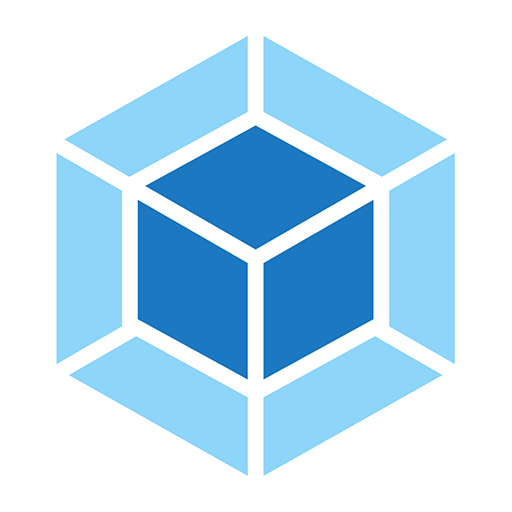



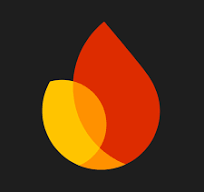






















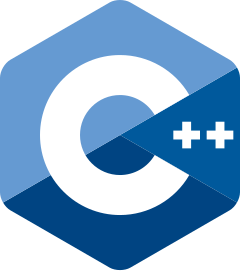








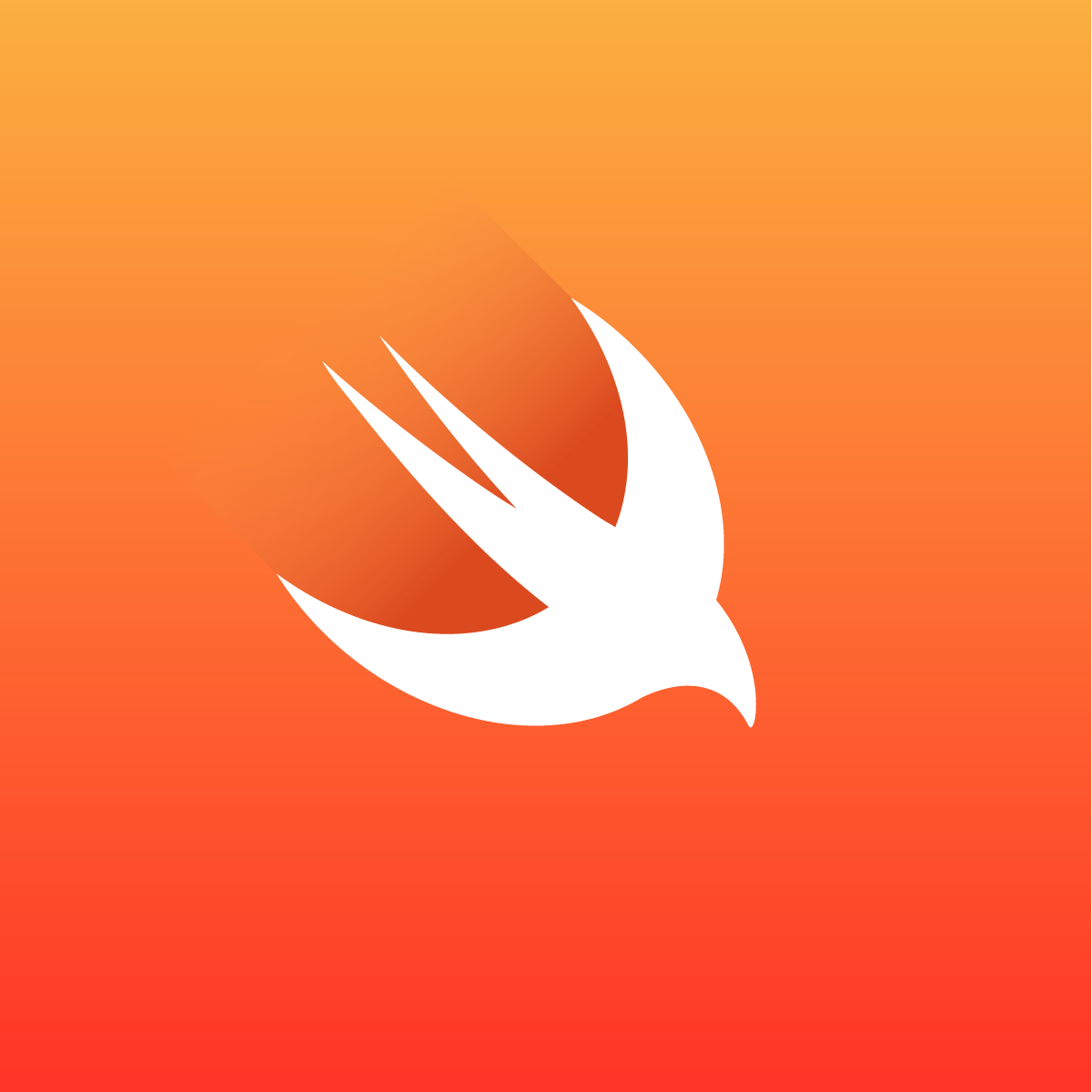















Tags
Cruip - Beautiful Tailwind CSS Templates
Supastarter - Next.js, Nuxt & SvelteKit Starters
UseSAASKit - SaaS Next.js Template
Shadcnblocks - Block set for Shadcn UI + Tailwind
SaaS Pegasus
NextBase
Gravity
Shipped
Shipixen
SaaS Rock
Makerkit
Divjoy
Modern MERN
Nextless.js
Ship SaaS
Hyper SaaS
Bedrock
Supaboost
Rocket
Volca
Asp Nano
SaaS Planet
React & Firebase SaaS Starter
SupaNexTail
SAAS Starter Kit Pro
Vite Electron Builder
SaaS Forge
SimonHoiberg SaaS Template
Learn More About React Boilerplates
What is React?
React is a popular JavaScript library for building user interfaces, particularly single-page applications where fast, dynamic, and interactive user experiences are essential. Developed and maintained by Facebook, React enables developers to create reusable UI components, making code more predictable and easier to debug. The core idea behind React is the component-based architecture, where the UI is divided into encapsulated components that manage their own state.
Benefits of Using React
- Component-Based Architecture: React allows developers to build encapsulated components that manage their own state, making the code more modular and reusable.
- Virtual DOM: React's virtual DOM optimizes updates and rendering, ensuring a fast and efficient UI.
- Strong Community Support: With a massive community and a wealth of resources, getting help and finding solutions to problems is easier than ever.
- Performance: React’s efficient update mechanism enhances the performance of applications, providing a smooth user experience.
- SEO-Friendly: With server-side rendering capabilities, React can help improve SEO for your web applications.
- Rich Ecosystem: The extensive ecosystem of tools, libraries, and third-party plugins available for React makes development faster and easier.
Common Features of React Boilerplates
- Pre-configured Build Tools: React boilerplates often come with pre-configured build tools like Webpack, Babel, and ESLint, which streamline the development process.
- Routing: Integration with React Router for handling client-side navigation.
- State Management: Included libraries for state management such as Redux or Context API.
- Styling Solutions: Support for CSS-in-JS solutions like styled-components or Sass for maintaining scalable stylesheets.
- Testing Frameworks: Pre-configured testing libraries like Jest and Enzyme for unit testing and integration testing.
- Code Splitting: Built-in support for code splitting to optimize loading times for larger applications.
React vs. Angular
When comparing React to Angular, another popular front-end framework, several key differences emerge:
- Learning Curve: React has a gentler learning curve compared to Angular, which is more opinionated and comprehensive.
- Flexibility: React offers more flexibility, allowing developers to choose their own libraries and tools, whereas Angular provides a more structured and complete solution.
- Performance: Both React and Angular provide high performance, but React’s virtual DOM can sometimes result in more efficient updates.
- Ecosystem: React boasts a larger ecosystem with more third-party libraries, while Angular has a robust, integrated set of tools provided out-of-the-box.
- Community and Popularity: React has a larger community and greater popularity, reflected in its widespread use and the number of resources available.
React Boilerplates Use Cases
- Single Page Applications (SPAs): Ideal for building SPAs where a dynamic and responsive user experience is crucial.
- Enterprise Web Applications: Suitable for large-scale applications requiring robust performance and maintainable codebases.
- E-commerce Platforms: Perfect for creating high-performance, interactive online stores.
- Dashboards and Data Visualization: Great for building data-intensive dashboards that require real-time updates and complex visualizations.
- Progressive Web Apps (PWAs): Excellent for developing PWAs with offline capabilities and enhanced performance.




